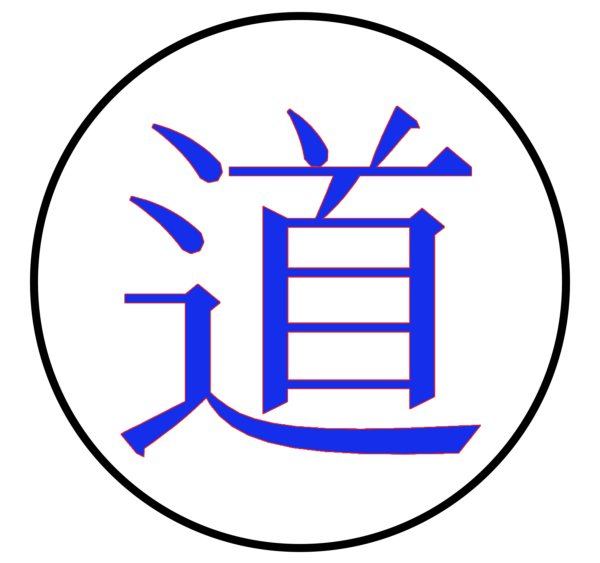QigongDharma & Xiū Dào 修道
The Cultivation of the Dao
QigongDharma practice emerges from the rich soil of Daoist and Buddhist traditions, embodying their synthesis and timeless wisdom. It is a path of cultivation rooted in the rhythm of nature and the compassionate clarity of awareness. At its heart lies the principle of Wú Wéi 無為—Effortless Effort—elegantly expressed in Lǎozǐ’s Dào Dé Jīng 道德經, and deeply lived through meditative embodiment.
In Chapter 27 of the Dào Dé Jīng, Lǎozǐ illuminates the art of subtle action and skillful presence—what might be called “leaving no trace.” This teaching has profoundly influenced Chan/Zen Buddhism, and it offers a framework for engaging the world impactfully yet unobtrusively. It fosters an environment where all beings are valued without exclusion—a foundational ethos of QigongDharma.
A Contemplative Interpretation of Chapter 27
The wise traveler leaves no trace;
Speaks, without faulting others;
Plans, without leaving things incomplete;
Offers security, without the need for locks;
Binds without knots that cannot be untied.
Such a person nurtures and values all,
Accepting all, rejecting none,
Attending to the smallest details so no talent is wasted.
In embracing all, the guide sees the potential in the weakest,
Turning the raw into the refined,
Guiding without imposing, teaching through being…
This is the essence of Enlightenment.
Philosophical Foundations: Daoism and Buddhism in Harmony
QigongDharma integrates the Daoist principle of Cháng Shàn Jiù Rén 常善救人—”always skilled at saving others,” reflecting a profound commitment to preserving life without abandonment. This aligns with the Bodhisattva Ideal in Mahāyāna Buddhism, where the awakening of one is inseparable from the liberation of all beings. Both traditions center on compassion, altruism, and the art of skillful means.
Though expressed through different cultural lenses, both Daoism and Buddhism seek the same underlying truth:
- For Buddhists, the aim is awakening—realizing the nature of mind and freedom from suffering.
- For Daoists, the goal is attunement with the Dao, the harmonious unfolding of existence.
QigongDharma honors this complementarity, weaving together these insights into a cohesive path that nourishes the whole being.
Wú Wéi in Practice: Leaving No Trace
To “leave no trace” is not merely to pass unnoticed; it is to act with such attunement that one’s presence is regenerative, not disruptive. It is a teaching of humility and precision.
- In nature, this means moving in rhythm with the seasons, conserving energy, and living sustainably.
- In relationships, it means giving care and love without conditions or expectations.
- In spiritual cultivation, it is to engage without striving, to guide without forcing, and to embody wisdom without proclaiming it.
True security, in this perspective, arises not from control but from the integrity of presence. It is rooted not in time-bound identity but in timeless being. Through the mirror of the Dao, we learn to see through illusion, embracing all beings and situations with equanimity, compassion, and clarity.
Xiū Dào 修道: The Cultivation of the Dao
In Daoist practice, this journey is known as Xiū Dào 修道—which means “to cultivate the Way.” It represents both a sacred task and a natural unfolding.
The first step is Zhú Jī 築基—Building the Foundation. This stage requires patience, consistency, and respect for natural cycles. Only with a strong foundation can the refinement of energy and spirit truly begin.
Within QigongDharma, the practitioner engages in the transformational cycle of the Sān Bǎo 三寶, the Three Treasures:
- Jīng 精 – Essence
- Qì 氣 – Vital Energy
- Shén 神 – Spirit
These treasures are not separate entities but flowing expressions of the same life force at different levels of refinement.
- Through Qigong and Neigong, Jīng is nourished and stabilized.
- From this, Qì arises and circulates, infusing vitality.
- As Qì is refined, it clarifies and uplifts Shén, awakening luminous awareness.
This path is both inward and outward:
- Wài Gōng 外功 – External cultivation: postures, breath, movement
- Nèi Gōng 內功 – Internal refinement: intention, awareness, energy transformation
Together, these practices support the body, harmonize the emotions, and awaken spiritual clarity.
Key Daoist Principles in the QigongDharma Path
QigongDharma integrates traditional Daoist teachings that offer waypoints for practice and transformation:
- Xiū Dào 修道 – Cultivating the Way of the Dao
- Zhú Jī 築基 – Building the foundation for deep internal development
- Liàn Jǐ 炼己 – Refining the self through Qigong and Neigong
- Bǔ Lòu 補漏 – Healing and mending what is leaking or deficient
- Huán Yuán 還原 – Returning to Original Nature, the Source
- Xuán Guān 玄關 – The Mysterious Gate: the threshold of inner alchemy and awakening
These principles are not merely philosophical—they are experiential. They are lived and realized through sincere practice, through harmonized breath, stillness, and motion.
QigongDharma as Contemporary Xiū Dào
QigongDharma stands as a modern embodiment of the Daoist and Buddhist legacy—a bridge between the ancient and the now. Through this integrated approach, practitioners are invited into a sacred dialogue with life, where transformation is both subtle and profound and vibrantly alive in the present.
In every gesture and every breath, we cultivate the Dao. Not by grasping but by releasing; not by striving but by aligning. We discover that the path itself is alive—responding to us as we awaken to it.
Through embodied experience, grounded in the teachings and guided by compassion, we return to our True Universal Nature.


